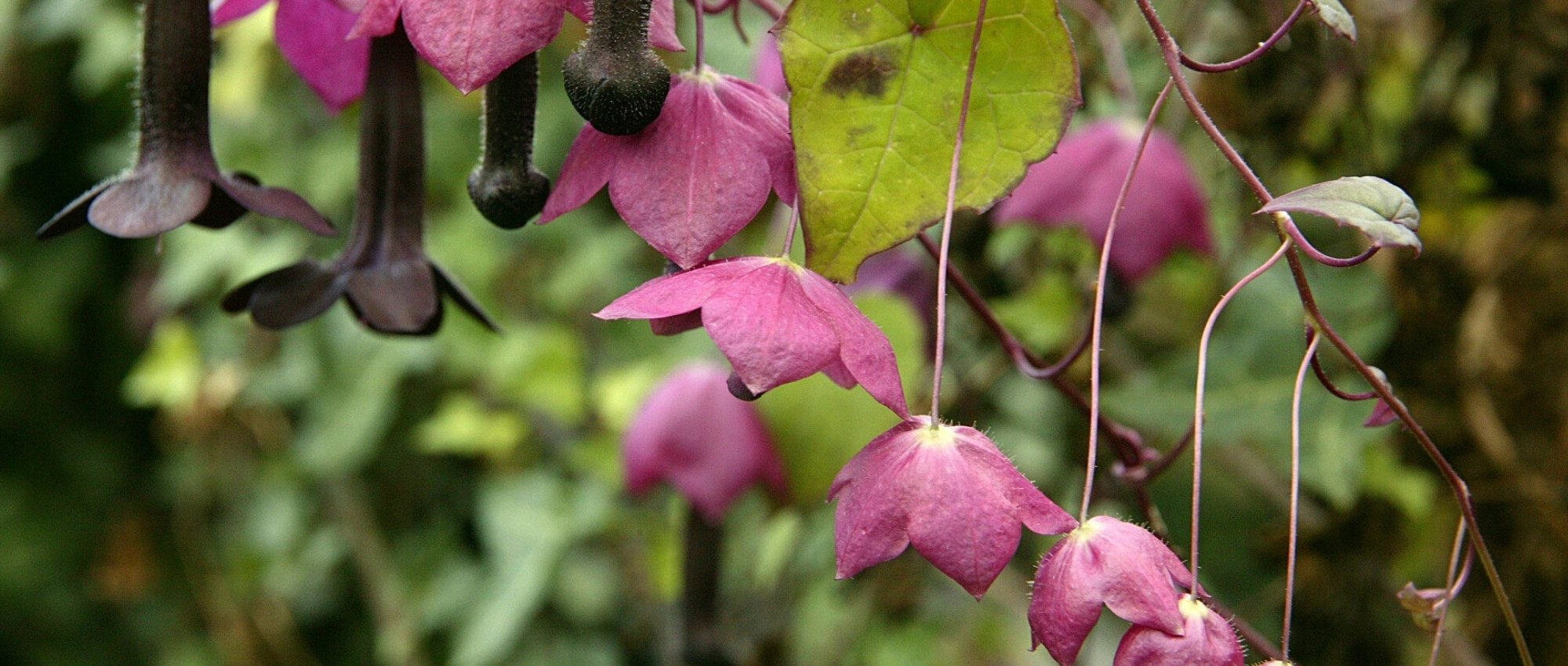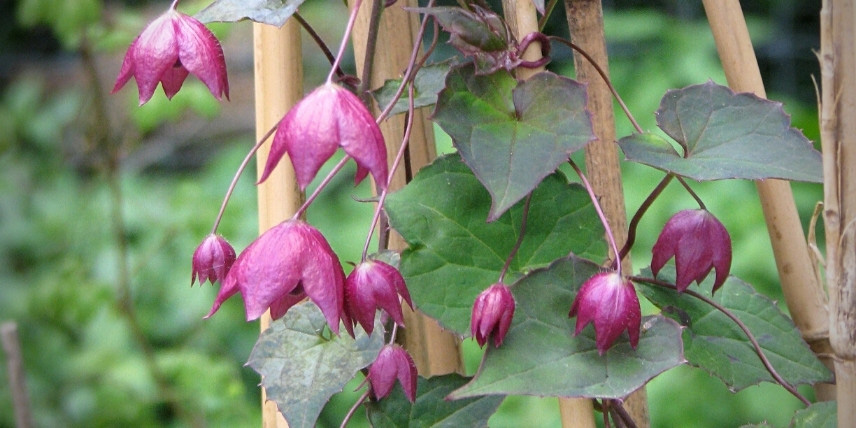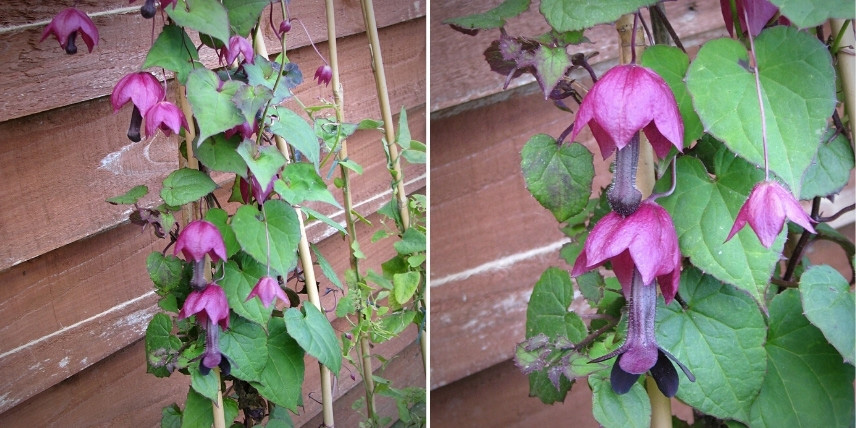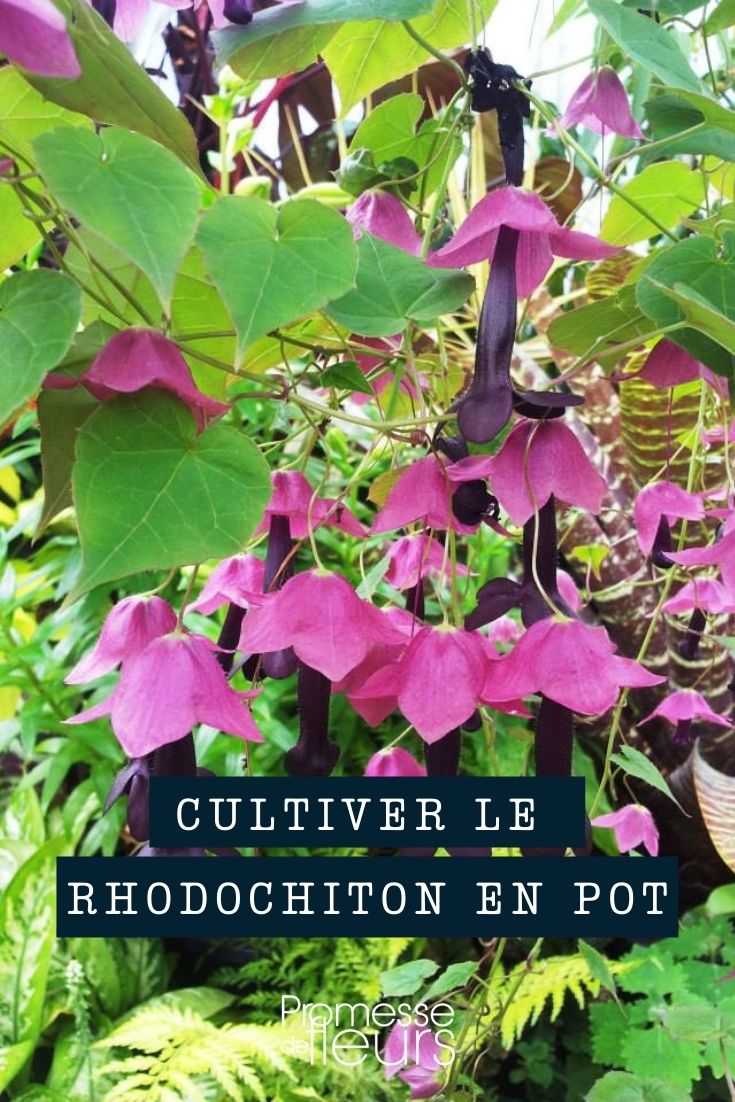
Growing Rhodochiton in Pots
All our tips
Contents
The Rhodochiton atrosanguineus, commonly known as Chinese Hat, is a beautiful Mexican climbing plant that produces bell-shaped purple flowers in summer and features attractive heart-shaped foliage. It has the advantage of growing quickly and can reach a maximum height of 2 to 3 m. Although it is perennial, it is often grown as an annual because it is frost-sensitive (its stump tolerates temperatures down to -5 °C). However, when potted, it is easy to bring it indoors under a veranda or greenhouse to protect it from the cold, allowing you to keep it for several years! Discover in this guide all our tips for successfully growing it in a pot.
What type of pot and substrate should you choose?
To grow Rhodochiton, choose a pot with a diameter and depth of at least 30 cm. You can opt for a plastic pot, which will be lightweight and economical. Rhodochiton is often grown in hanging arrangements, allowing its foliage and flowers to cascade beautifully! Terracotta pots are also suitable: they are breathable, more aesthetically pleasing, and environmentally friendly compared to plastic ones, but they are heavier to handle. In any case, ensure that the pot has drainage holes at the bottom. You can also choose a large trough or a planter with an integrated trellis, so you won’t need to add a support for it to climb.
Rhodochiton requires rich, well-drained soil, as it cannot tolerate waterlogged conditions. We recommend creating a mix of 1/3 potting soil, 1/3 garden soil, and 1/3 coarse sand (for drainage).

When and how to sow Rhodochiton?
Sowing takes place under cover between February and April.
- Fill pots with special sowing compost, then lightly compact and level the surface.
- Sow by placing 3 or 4 seeds in each pot.
- Gently press down on the seeds to slightly embed them in the substrate. They should not be buried deeply, as light promotes their germination.
- Water with a fine spray.
We recommend placing the pots in a mini greenhouse or covering them with plastic film or a transparent lid to maintain a warm and humid atmosphere. Remember to ventilate regularly to prevent mould. Place the pots in a sheltered, bright location, with a temperature between 15 and 20 °C. Seeds take between 10 days and 1.5 months to germinate. You can transplant the young plants into individual pots as soon as they reach 5 cm.
How to plant and repot Rhodochiton?
Plant the rhodochiton in a pot in spring, during April-May. Remember to provide a support for it to climb on: trellis, fence, tipi, pergola, arch… unless you are growing it in suspension (in which case its stems will cascade down from the pot).
- Take a pot with a diameter and depth of at least 30 cm. Ensure it has drainage holes at the bottom.
- Place a drainage layer, made up of, for example, clay balls, gravel, or broken pot pieces.
- Next, install substrate in the pot (we recommend a mix of 1/3 potting soil, 1/3 garden soil, and 1/3 coarse sand).
- Remove the rhodochiton from its original pot and place it in the new one, right in the centre.
- Fill in with substrate, but be careful not to bury the collar.
- Water generously.
- Start directing its stems onto the support to help it cling.
You can place the rhodochiton on your terrace or balcony. For it to thrive and provide abundant flowering, we recommend positioning it in full sun, sheltered from the wind.

How to care for it?
Watering
Rhodochiton enjoys soil that remains moist throughout the season: remember to water it regularly from spring to autumn, as the substrate in pots dries out quite quickly (faster than in open ground). We recommend watering it once or twice a week, avoiding excess moisture: allow the substrate to dry briefly between waterings and avoid letting water stagnate in the saucer. If you keep the Rhodochiton from one year to the next by bringing it indoors, space out the waterings in winter. We also advise placing a layer of organic mulch on the surface of the substrate: this will limit evaporation and prevent it from drying out too quickly.
Fertiliser
In pots, nutrient reserves are limited and the substrate tends to deplete quickly. To nourish the Rhodochiton and support its flowering, from spring to autumn, apply a liquid fertiliser rich in potassium once or twice a month. You can also add a bit of compost on the surface.
Wintering
Rhodochiton is a frost-sensitive plant (its stump can withstand temperatures down to -5 °C): if you wish to keep it from one year to the next, remember to bring the pot indoors in autumn. Place it in a bright location (for example, a conservatory or a greenhouse kept frost-free), reduce watering, and stop fertiliser applications during winter. You can take it outside again in spring.
- Subscribe!
- Contents
































Comments